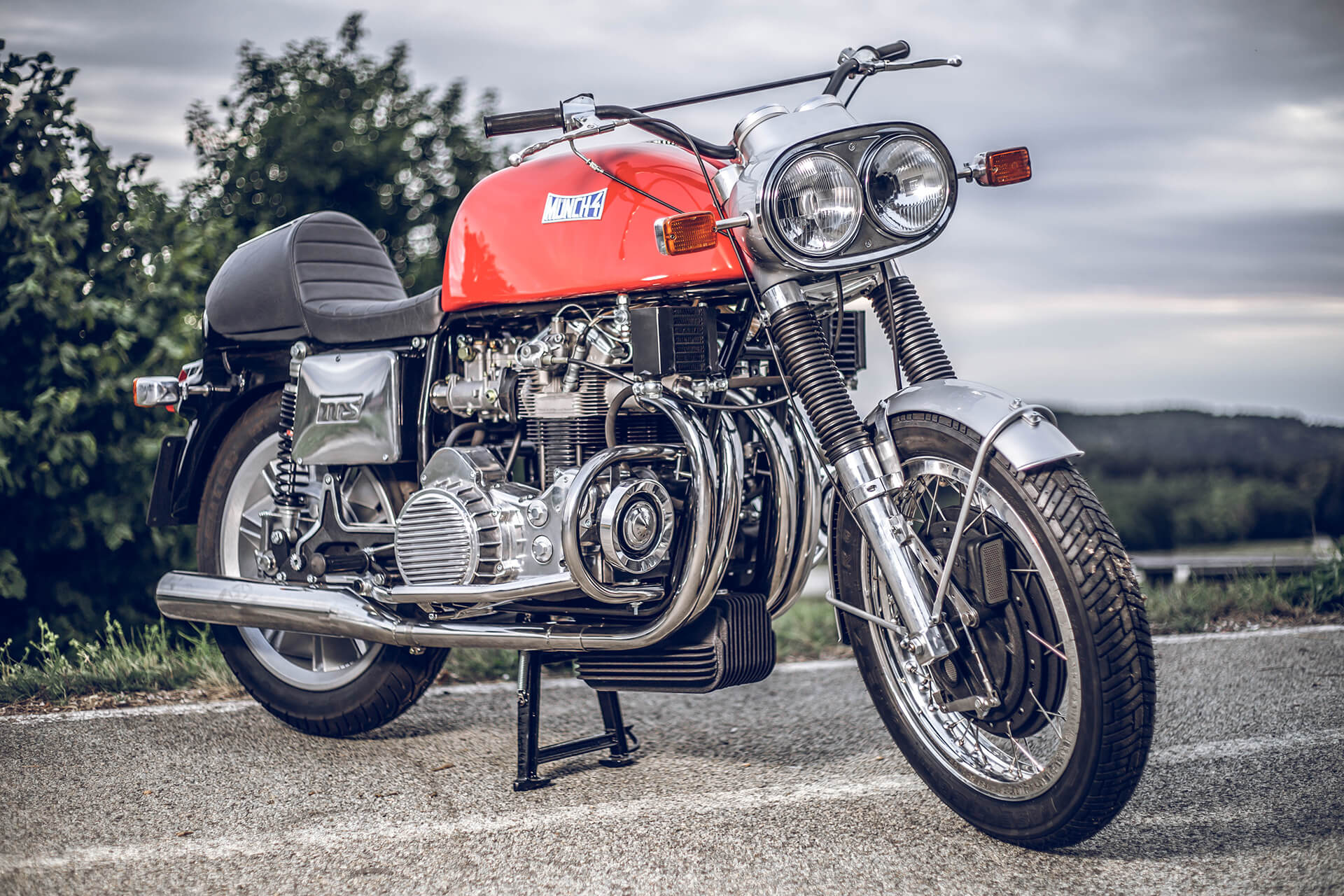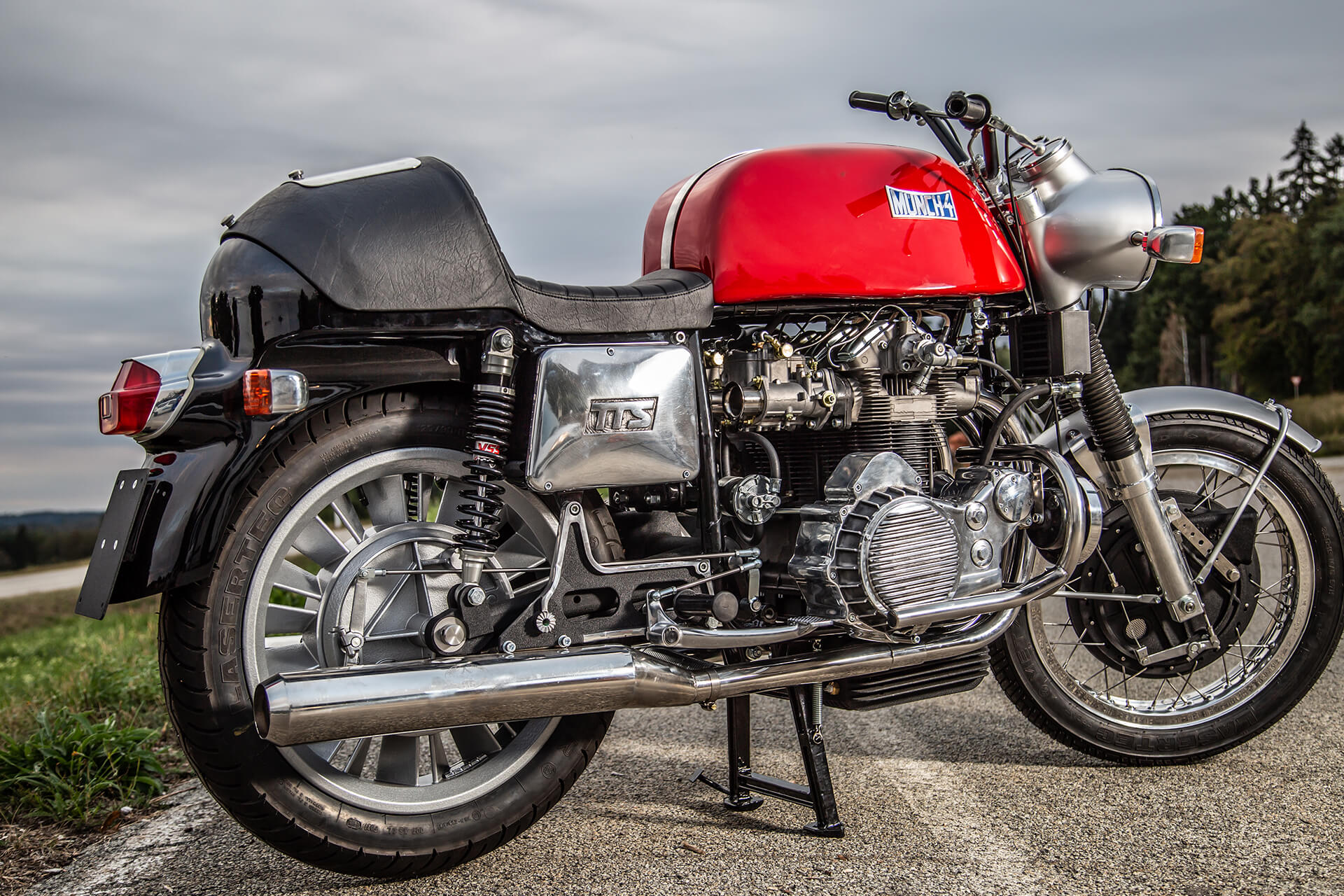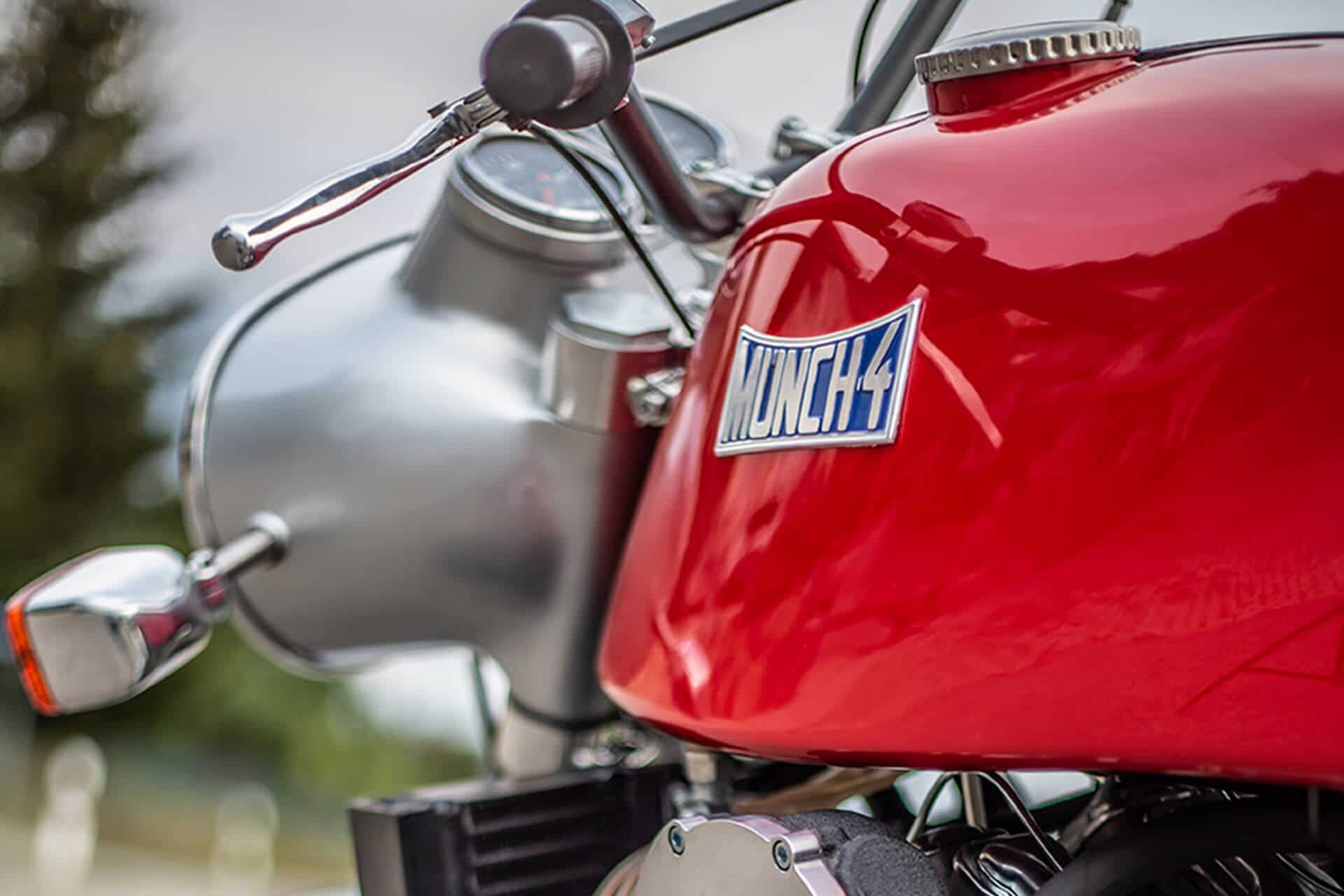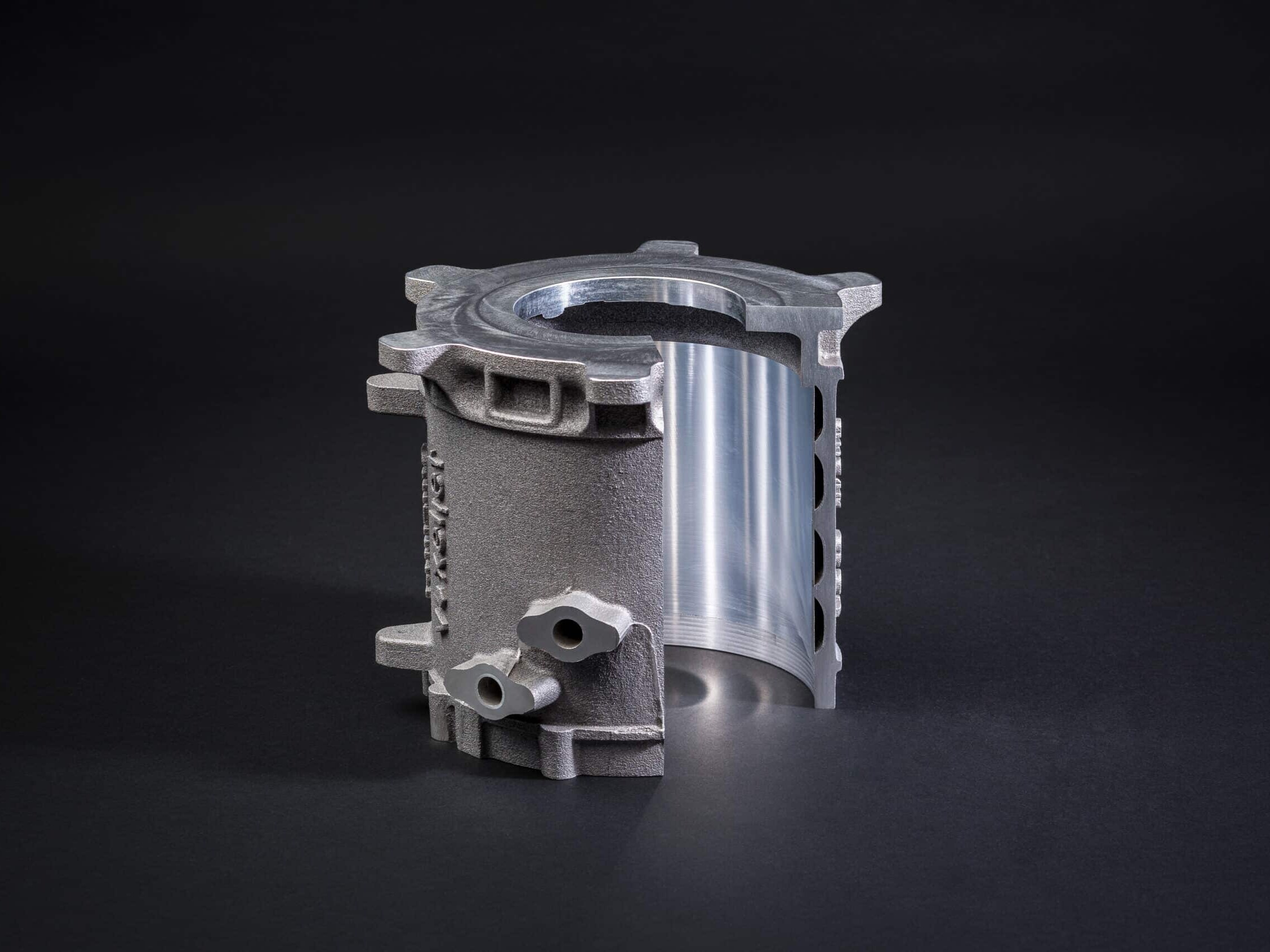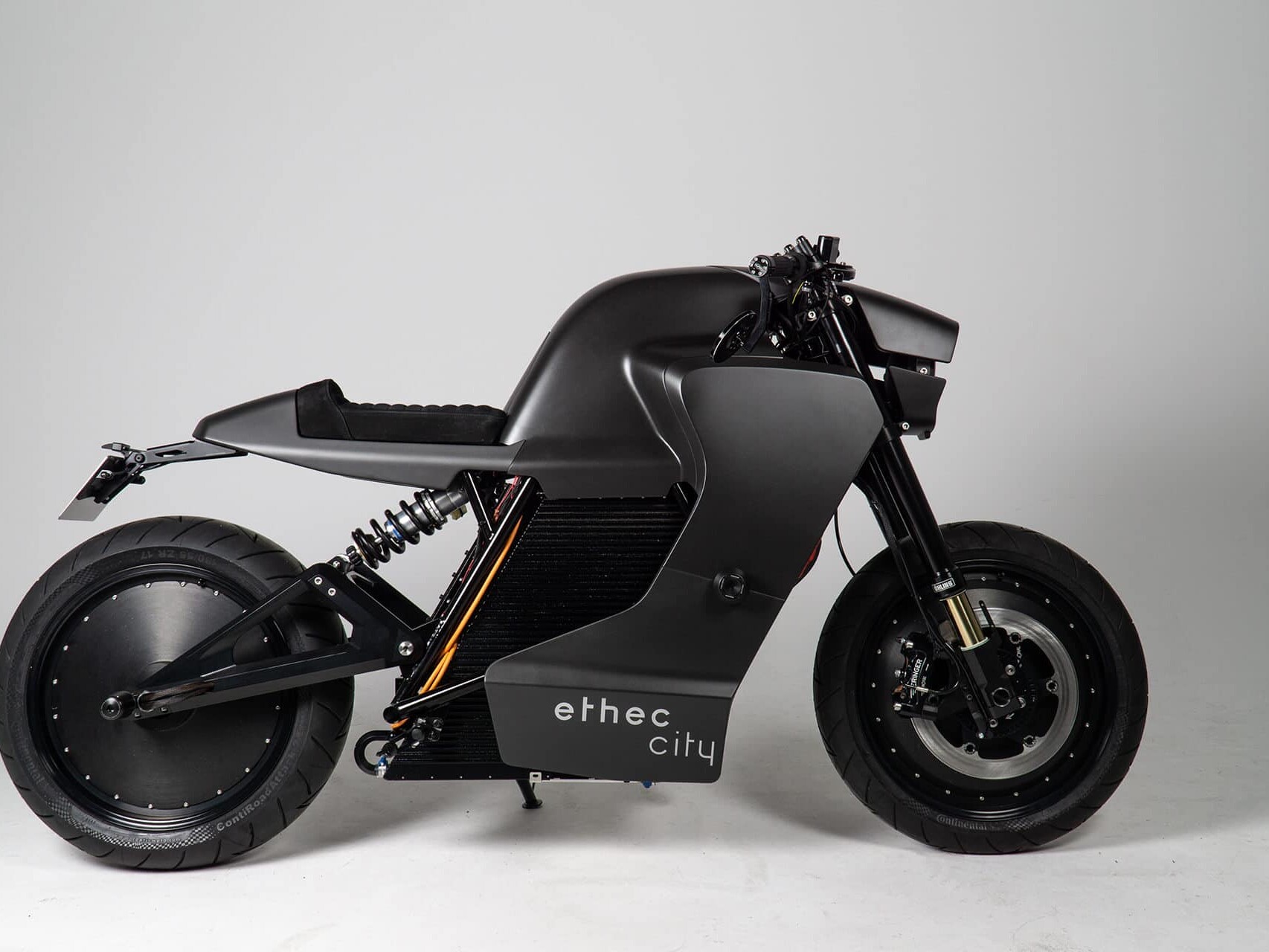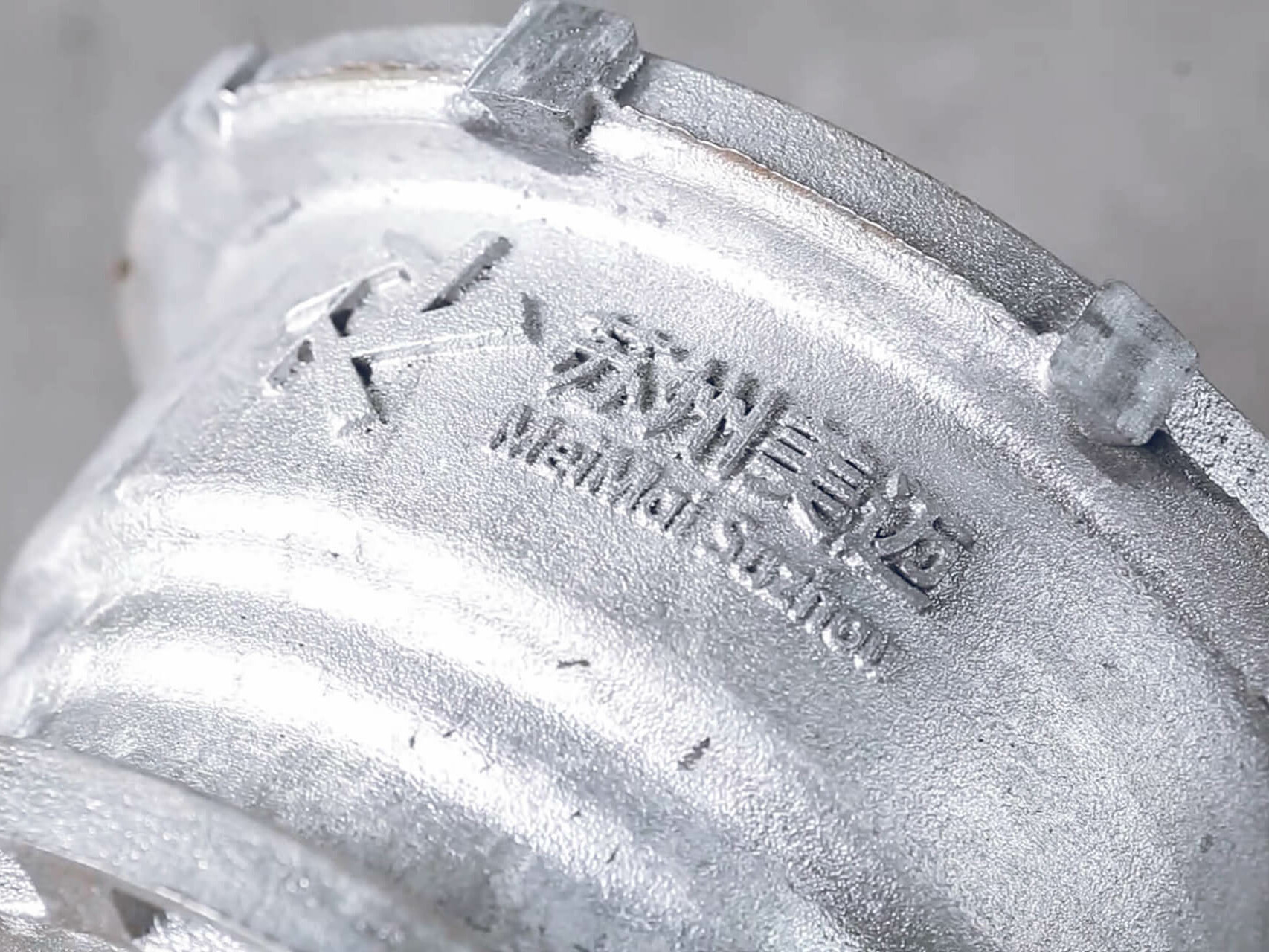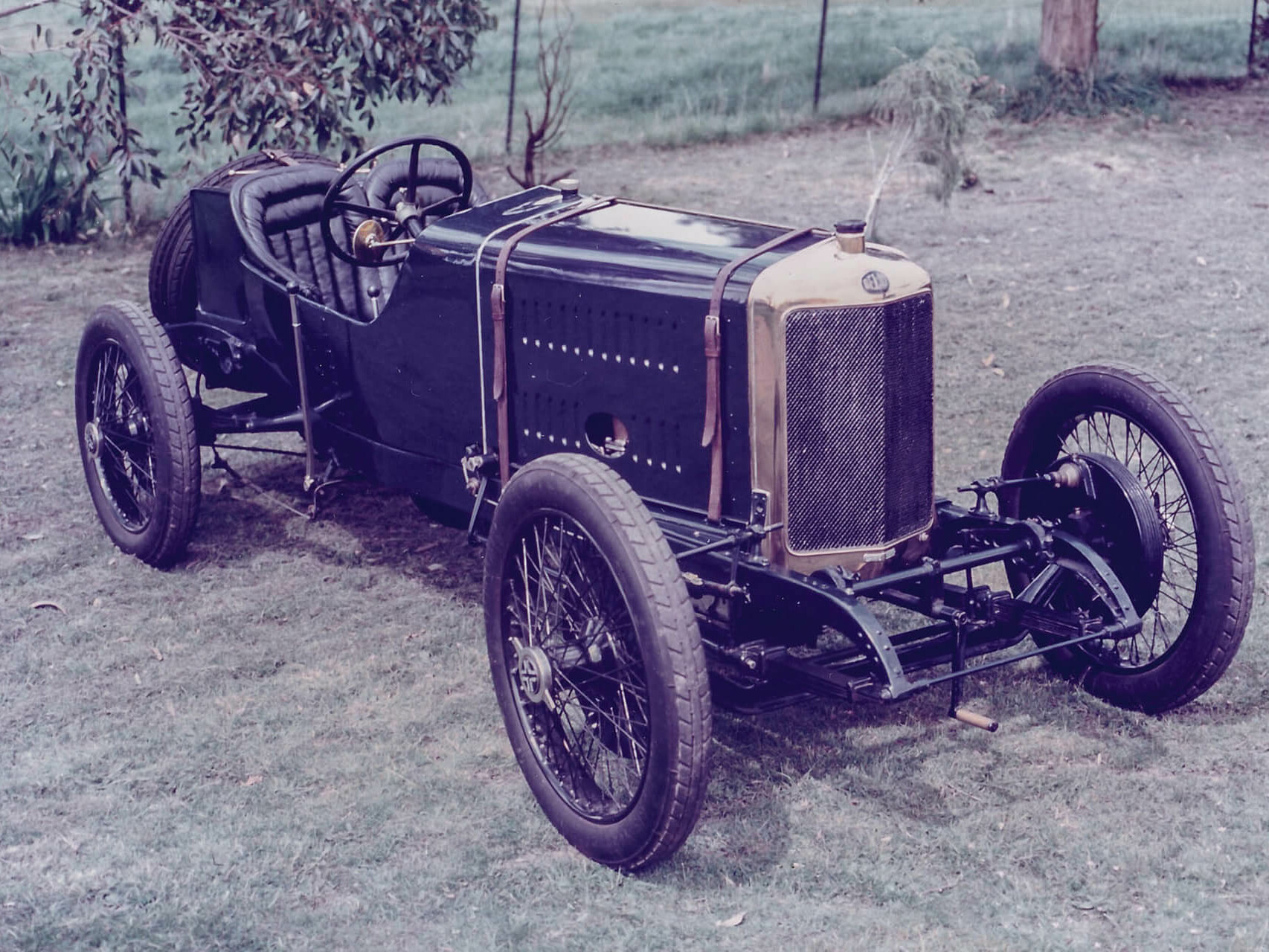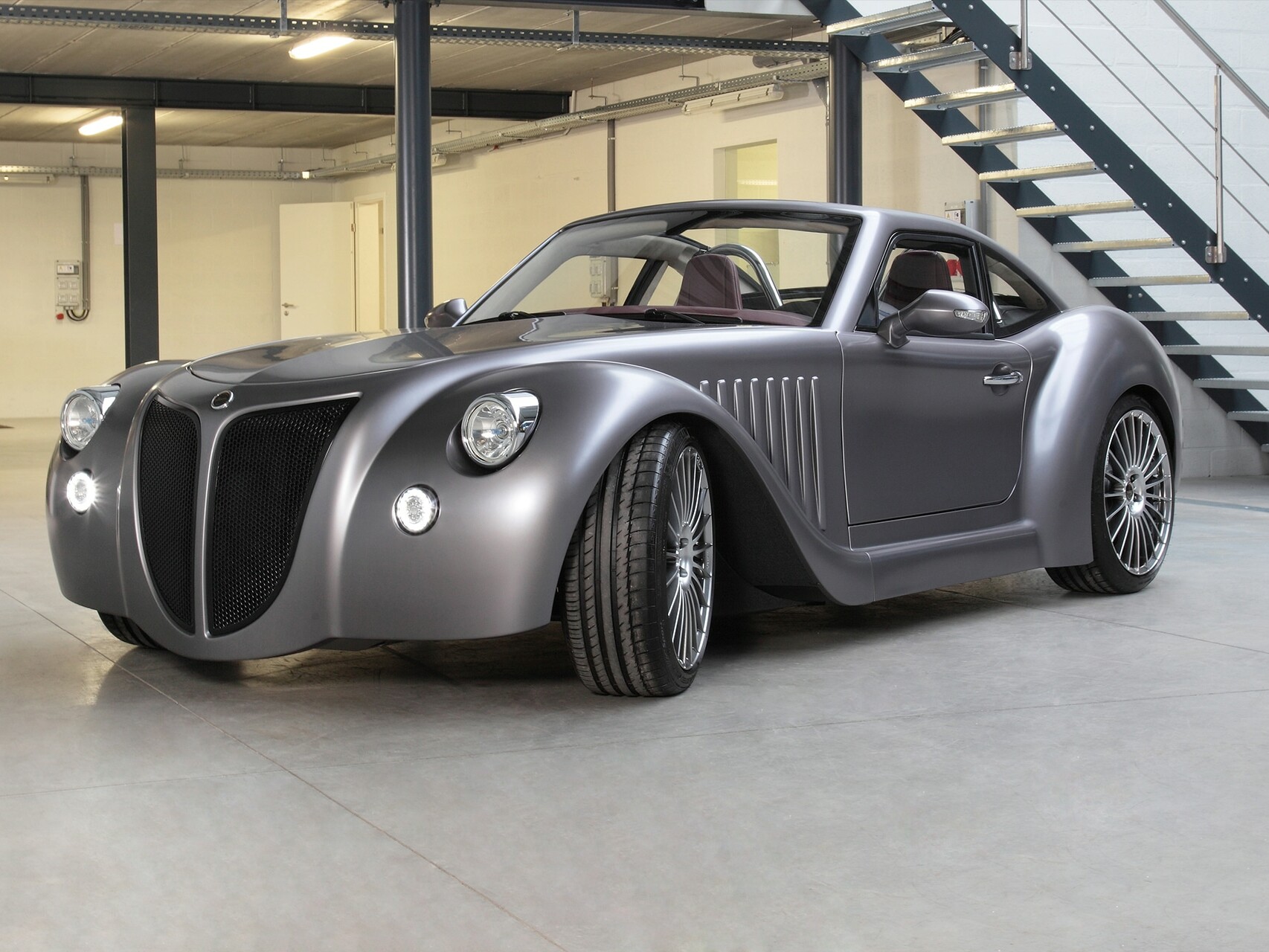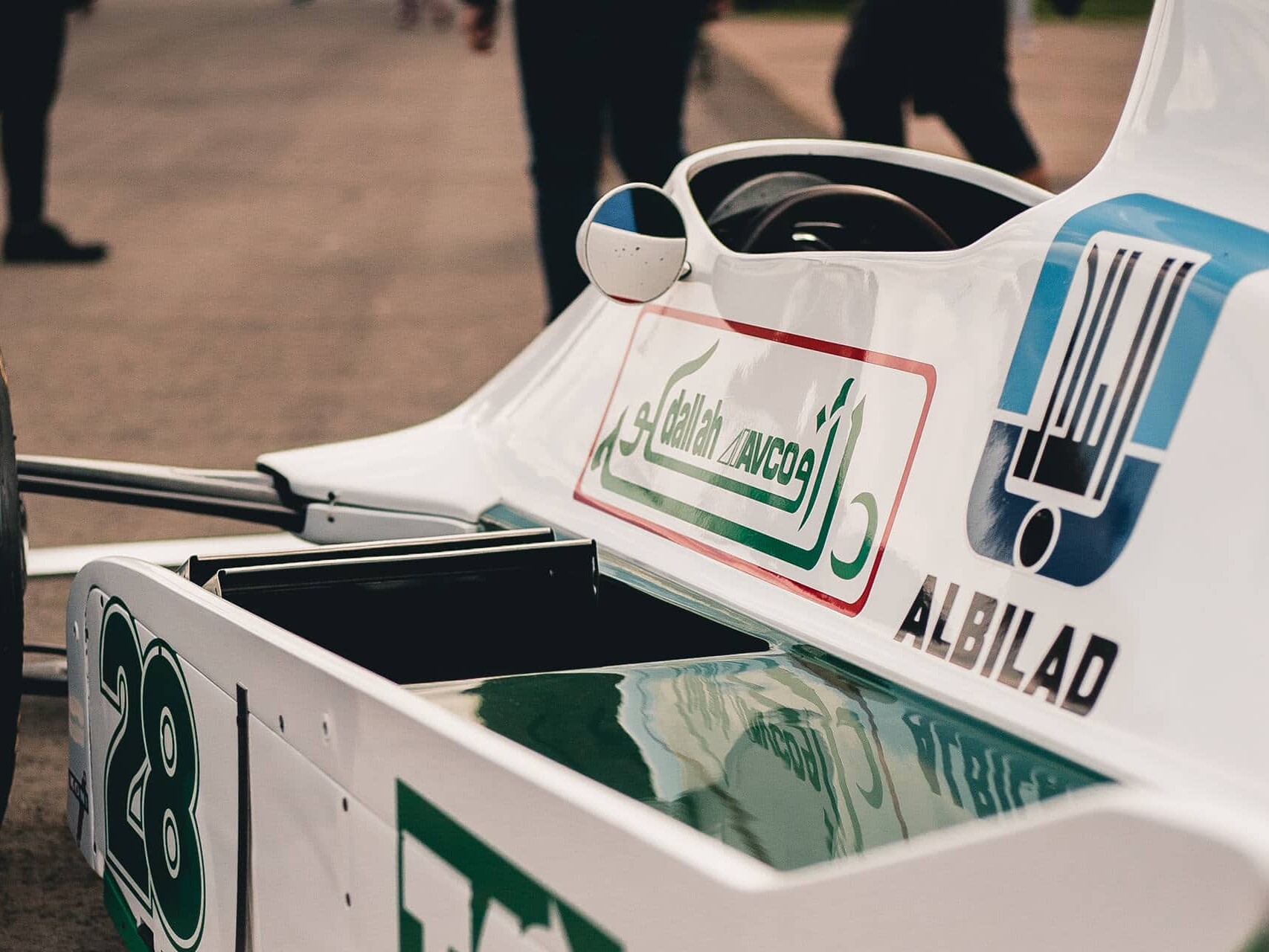- Home
- Case Studies
- Automotive
- Reverse engineering a Münch Mammut with 3D printing
Revival of a legend:Reverse engineering of a Münch Mammut with 3D printing
The Münch 4 TTS (also known as the Münch Mammut) is one of the most sought-after motorbikes in the motorcycle scene. At the end of the 1960s, the designer and motorbike enthusiast Friedel Münch became self-employed and founded his own workshop, where he built a limited number of Münch motorcycles.
The most famous of these is the Münch 4 TTS with an engine capacity of 1200 cm³. Friedel Münch specialised in the use of air-cooled, four-cylinder engines and manufactured every motorbike using his own drawings. Overall, the company produced merely 500 motorcycles over a period of 10 years.
Another feature that became particularly well known was the use of Electron (a magnesium alloy) light metal casting on the rear wheel and the front brake. At the time, this was an unusual method of construction.
Today, the Münch Mammut has reached a real cult status. Due to the small quantities produced and the uniqueness of the engine, there are hardly any genuine originals left in good working condition. However, in the motorbiking world, that doesn’t stop people from pursuing their dream of owning this iconic piece of machinery.
Markus Pohl, a metalworker from Straubing, Germany, has decided to make his lifelong dream a reality and build his own Münch Mammut. An ambitious project.
Luckily, the trained engineer was able to buy an original Münch 4, but it was not ready to drive. As original spare parts are also a rare commodity these days, Pohl started searching for an alternative solution. Finally, by using latest technology, a breakthrough was made. Markus Pohl dismantled the motorbike into its individual parts, in order to digitize them via 3D scanning technology. The generated datasets were further processed on the computer to create the corresponding casting molds.
In order to recreate the cast components and make them true to the original, the Bavarian engineer turned to voxeljet in Friedberg, near Augsburg. The company is one of the leading manufacturers of industrial 3D printing systems, and operates one of the largest on-demand service centres producing sand molds for metal casting in Friedberg. Markus Pohl submitted his data sets to voxeljet to allow 3D printing of dimensionally accurate sand molds without any need for tooling.
The great advantage of 3D printing is that you can produce sand molds quickly and without the use of tools,” explains Markus Pohl. “This meant I had the molds ready for casting within just a few days, instead of having to wait six to eight weeks.
Markus Pohl, OwnerPohl Metallbildner
The building process for sand molds using additive manufacturing is fully automated. In the 3D printing system, the so-called recoater applies a 300 µm thin layer of silica sand onto a building platform. A high-performance print head then moves over the platform and glues the sand together using a Furan resin, wherever the component is to be created. The building platform then lowers by one layerthickness, and a new layer of sand is applied. This process is repeated until the component has been fully constructed. After removing any excess sand, the mold is ready for casting and can be integrated seamlessly into standard sand casting processes thanks to the usage of common casting materials.
For small series, or as in this case, producing an individual part, the conventional method of pattern making is simply not feasible. 3D printing offers an ideal alternative for producing custom-fit parts quickly and economically.
Markus Pohl, OwnerPohl Metallbildner
To create the metal components, Pohl turned to the foundry Gugg in Straubing. A foundry specialised in various alloys, including aluminium, which was used to produce the parts for Pohl’s Mammut.
Markus Pohl was able to assemble the entire Münch in just one year. And he is already planning his next project: In 1972, the famous artist Luigi Colani designed a new edition of the legendary motorbike in collaboration with Friedel Münch. Now Markus Pohl also wants to recreate this model in his workshop in Saulburg.
Further Case Studies
3D printing for optimized electric motors
Aiona Cast has filed a patent application to significantly optimize electric motors. The company produced a prototype using 3D printing.
Printed Castings – Optimized housing lets E-Motorcycle Batteries live longer
By using innovative technologies such as 3D printing, the prototype could soon go into series production.
Electric motor housing from the 3D printer
voxeljet 3D printing technology for producing cast parts for electric-mobility
Reverse engineering of a racing engine block
The Binder Jetting technology keeps a classic car on the road
Engine optimization with 3D printing
Vehicle technology manufacturer Lütgemeier increases flexibility and productivity using the voxeljet VX1000 3D printing system in order to supply the high-performance car tuning company Brabus
3D Printing in Reverse Engineering
In the oldtimer sector, more and more spare parts are being manufactured without tools using modern measuring technology in combination with 3D printing.
3D printing and its applications for racing
3D printing provides racing with the ability to quickly complete innovation cycles.
3D Printing Solutions
Would you like to learn more about voxeljet and 3D printing? Click here for the entire voxeljet solution portfolio.



















